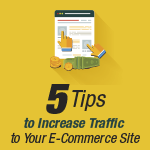 If you dream of opening an online store, chances are you’ve envisioned what you’ll sell. But even if you’ve always wanted to run a widget shop, you need to think long and hard about whether or not widgets will sell! If buyers don’t want what you’re offering, no amount of marketing, online buzz or discounts will make it fly off your shelves. So before you invest time, resources and effort into getting your website sales up and running, take some time to think about how to find and sell products online.
If you dream of opening an online store, chances are you’ve envisioned what you’ll sell. But even if you’ve always wanted to run a widget shop, you need to think long and hard about whether or not widgets will sell! If buyers don’t want what you’re offering, no amount of marketing, online buzz or discounts will make it fly off your shelves. So before you invest time, resources and effort into getting your website sales up and running, take some time to think about how to find and sell products online.
Step 1: Finding the Right Product
As you consider the pros and cons of different products to sell, here are some questions to ask yourself.
- Is there demand for my product? If you’re a savvy shopper yourself, you already have an idea of what’s hot or up-and-coming. Regardless, take yourself on a virtual shopping spree to get all the facts. A few quick searches on eBay will display the market price for a specific product. Online tools like Google Trends can also provide valuable insight into hot selling products and the number of people searching for related product keywords. Find out if shoppers truly want this product, what the market size is and whether or not it makes sense to sell it online at all. Seasonality counts, too; keep in mind that certain products will sell well only during certain times of the year (like beach toys in summer). Another important point to think about: Does this product offer the potential for repeat shoppers, or is it a once-in-a-lifetime investment? These factors will drive your marketing, inventory and price.
- Is my product legal to sell? You may know you’re not dealing in anything illegal … but if you’re planning to sell internationally, your targeted countries may not always see it that way. For instance, those vintage playing cards in your store may seem innocuous, but business won’t boom in Brazil, which prohibits their sale! As an international seller, it is your responsibility to make sure that your product is compliant with the laws of the country you are selling to. Before you set up your online store to sell overseas, make sure you take the time to familiarize yourself with the regulations of all the countries you are planning to sell to. For an overview, visit eCommerceWeekly’s Shipping Internationally: Understanding Prohibited and Restricted Items.
- Who’s my competition? In a healthy economy, there’s room for multiple sellers of the same product – but you don’t want to enter a saturated market. Visit websites of online and brick-and-mortar stores to get an idea of how popular your chosen item is, how your competition attracts and interacts with customers, and any promotions they use to drive sales. Sign up for their newsletters and social media alerts, too, and try Google’s Keyword Planner Tool to take a look at SEO competition – your online store’s eventual position on Search Engine Results Pages will have a direct impact on your ability to attract customers. Finally, search for your product on eBay, Amazon and other major marketplaces in e-commerce, because that’s often where shoppers go first.
- What will my costs be? Once you’ve gotten an idea of what your competitors charge for their products, you can hone in on the price you should charge. But make sure you’re taking all costs into account! What are you paying for your e-commerce site, packaging, shipping and publicity? Will your product markup adequately cover your costs, plus provide enough of a profit margin for you?
Step 2: Selling Your Product Online
Now that you’ve determined that your product has potential, let’s start thinking about getting it sold. Once again, ask yourself the following questions:
- How can I effectively market my product? You’ve paid attention to the competition – now figure out what these online merchants are doing right and wrong in getting their merchandise noticed. Devising an effective marketing strategy is fairly straightforward (look online for samples and tutorials) and will give you the framework to ensure you’re hitting all the marks in terms of publicity, advertising, social media (eCommerceWeekly gives a good rundown of social media and selling at Social Commerce: How It Can Impact Your Bottom Line!), promos and loyalty programs. Remember, buzz is what it’s all about with e-commerce. Grab customers’ attention in a unique and professional way, and watch your sales spike!
- How will I ship my items to buyers? When you were weighing the pros and cons of your product, with any luck you considered whether it will survive the shipping process. A pottery shop, for instance, won’t stay in business long until you’ve figured out exactly how to protect your pieces from origin to destination, and if what you’re selling is perishable, timely delivery is of the utmost importance. In all cases, making sure you’ve invested in the best shipping materials and procedures possible will protect you from unhappy customers and the cost of having to replace damaged items. (International shipments require an extra level of care; for a primer, check out eCommerceWeekly’s Packing Tips for International Delivery.)
You’re On Your Way!
It’s exciting to start a new venture and sell products online. Spending some time asking yourself the questions above will help ensure that your e-commerce site is timely, relevant and provides a great shopping experience for your customers!



![[Infographic] Transactional Email Best Practices for E-Commerce Businesses](https://www.ecommerceweekly.com/wp-content/uploads/2014/10/infographic_ecommerce-150x1501.jpg)

